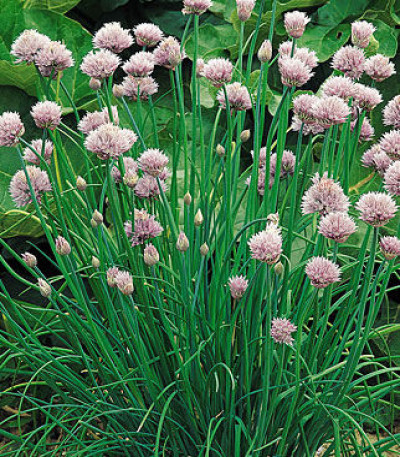


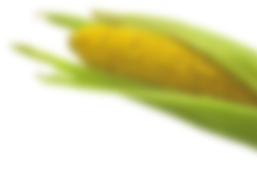
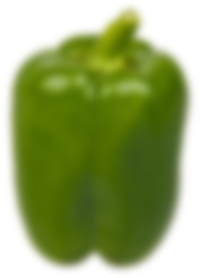
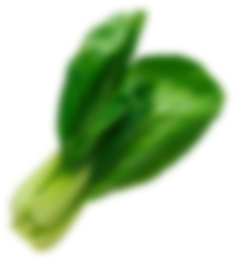
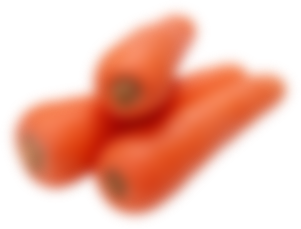
Chives
€9.42
(Price per package)
Cut leaves for salads, potatoes, soups. Good for growing indoors. Perennial in Zones 3-10. We searched the world to find the best organic seed-Burpee fully guarantees that not a drop of synthetic chemicals was used to make these excellent seeds. Certified Organic Seed.
- Selected Seeds (Spain)
- Fall, Spring
- Full Sun
- 3-4 inches
- 12-18 inches
- Perennial
- 80-90 days
- Direct Sow/Indoor Sow
Chives may be grown from seed sown early indoors and transplanted outside after frost or sown directly in the garden.
Sowing Seed Indoors:
- Sow chives seeds indoors 8-10 weeks before the average last frost date in spring using a seed starting kit.
- Sow seeds ¼ inch deep in seed starting formula
- Keep the soil moist at 70 degrees F
- Seedlings will emerge in 7-14 days
- As soon as the seedlings emerge, provide plenty of light on a sunny windowsill, or grow seedlings 3-4 inches beneath fluorescent plant lights turned on 16 hours per day, off for 8 hours at night. Raise the lights as the plants grow taller. Incandescent bulbs will not work for this process because they will get too hot. Most plants require a dark period to grow, do not leave lights on for 24 hours.
- Seedlings do not need much fertilizer, feed when they are 3-4 weeks old using a starter solution (half strength of a complete indoor houseplant food) according to manufacturer’s directions.
- Before planting in the garden, seedling plants need to be “hardened off”. Accustom young plants to outdoor conditions by moving them to a sheltered place outside for a week. Be sure to protect them from wind and hot sun at first. If frost threatens at night, cover or bring containers indoors, then take them out again in the morning. This hardening off process toughens the plant’s cell structure and reduces transplant shock and scalding.
Sowing Directly in the Garden:
- Direct sow in average soil in full sun after all danger of frost. In frost free areas sow from fall to early spring.
- Remove weeds and work organic matter into the top 6-8 inches of soil; then level and smooth.
- Sow seeds evenly and cover with ¼ inches of fine soil.
- Firm the soil lightly and keep evenly moist.
- Seedlings will emerge in 7-14 days.
- Thin to 3 inches apart when seedlings are 1-2 inches tall.
Planting in the Garden:
- Select a location in full sun where water drains quickly after a rainfall.
- Prepare the bed by turning the soil under to a depth of 8 inches. Level with a rake to remove clumps of grass and stones.
- Dig a hole for each plant large enough to amply accommodate the root ball.
- Carefully remove the plant from its pot and gently loosen the root ball, if tight, with your hands to encourage good root development.
- Place the top of the root ball even with the level of the surrounding soil. Fill with soil to the top of the root ball. Press soil down firmly with your hand leaving a slight depression around the plant to hold water.
- Use the plant tag as a location marker.
- Water thoroughly, so that a puddle forms in the saucer you have created. This settles the plants in, drives out air pockets and results in good root-to-soil contact.
- Do not allow plants to dry out, but never let the soil stay wet.
- Keep weeds under control during the growing season. Weeds compete with plants for water, space and nutrients, so control them by either cultivating often or use a mulch to prevent their seeds from germinating.
- Mulches also help retain soil moisture and maintain even soil temperatures. For herbs, an organic mulch of aged bark or shredded leaves lends a natural look to the bed and will improve the soil as it breaks down in time. Always keep mulches off a plant's stems to prevent possible rot.
- Keep plants well-watered during the growing season, especially during dry spells. Plants need about 1 inch of rain per week during the growing season. It's best to water with a drip or trickle system that delivers water at low pressure at the soil level. If you water with overhead sprinklers, water early in the day so the foliage has time to dry off before evening, to minimize disease problems. Keep the soil moist but not saturated.
- Cut leaves to the ground after blooming to encourage the production of fresh new leaves.
- For garlic chives, pinch off spent flowers in fall to prevent rampant self-sowing.
- Divide clumps every 3 to 4 years to keep them vigorous.
- Monitor for pests and diseases. Check with your local Cooperative Extension Service for pest controls recommended for your area.
- Harvest the leaves by clipping them back to 1 inch above the ground; new leaves will emerge.
- Add fresh leaves to salads, soups, cream cheese, butter, or sandwiches.
- Sprinkle the florets on salads.
- The leaves and flowers also make flavorful vinegars. Try adding the pink-lavender blooms to white vinegar—they will give it a light onion flavor and a beautiful pink color.
- After garlic chives plants flower, the attractive seed heads may be harvested and used in herbal wreaths and arrangements.
- Include garlic chives in perennial borders, herb gardens, vegetable and containers, indoors and out.
No Reviews for This Product Yet
Add review
Recently Viewed
© 2019 Vegetable Seeds – Vegetable Seed Store

